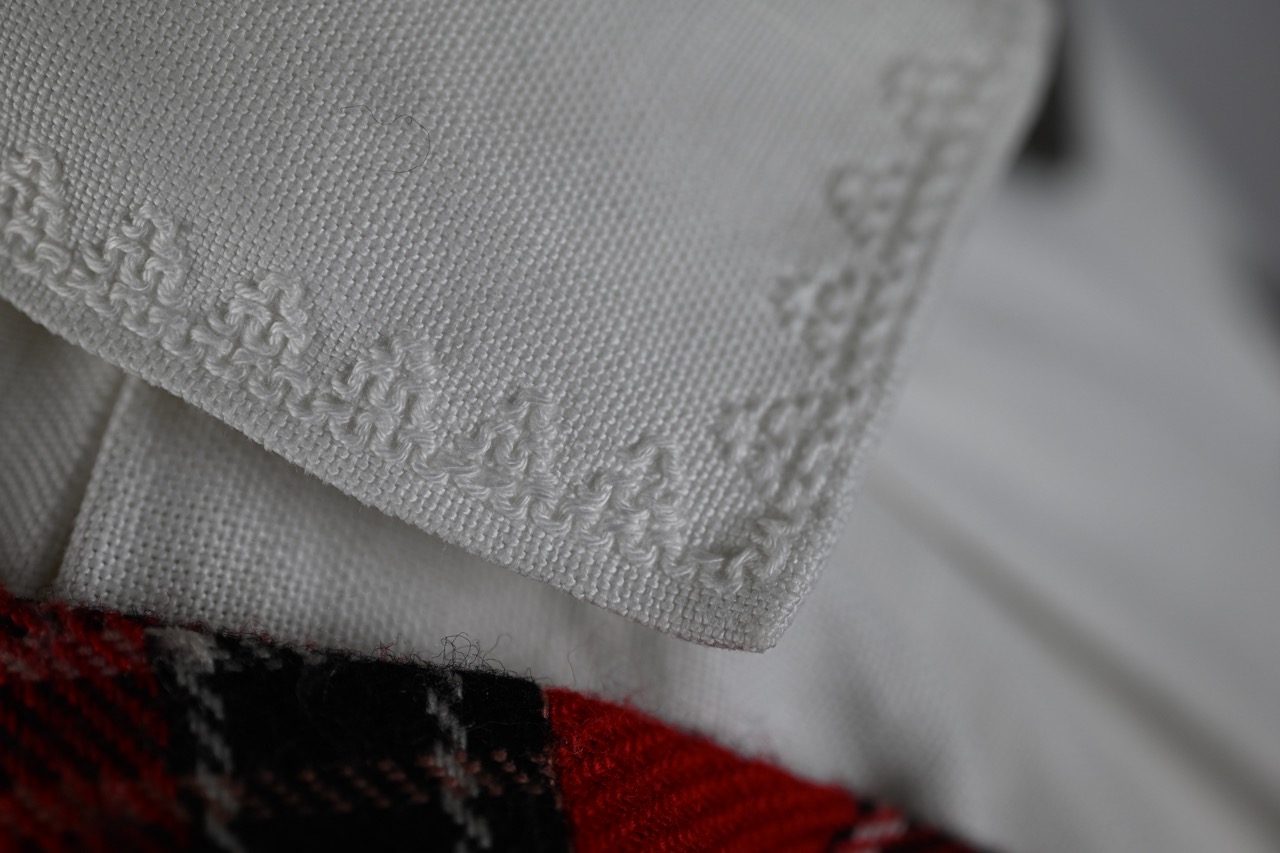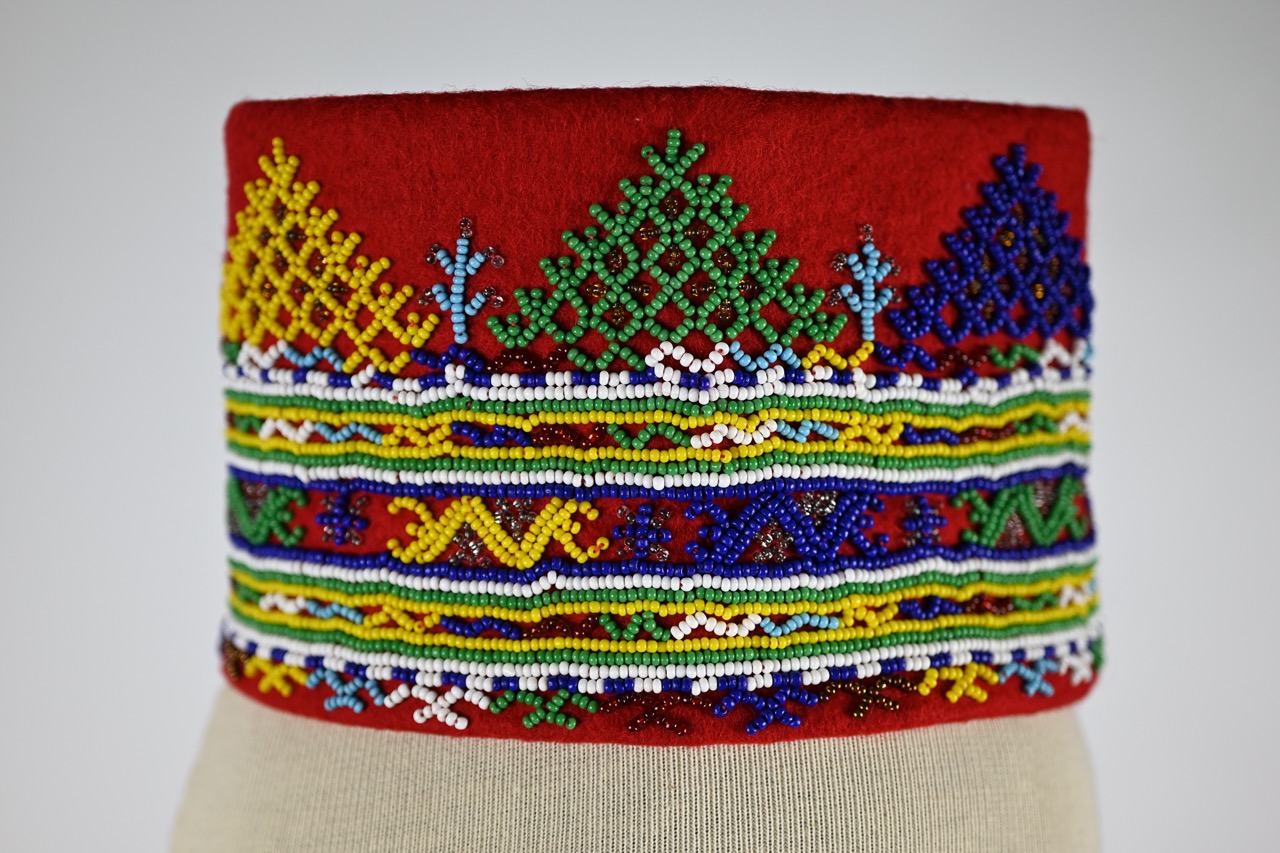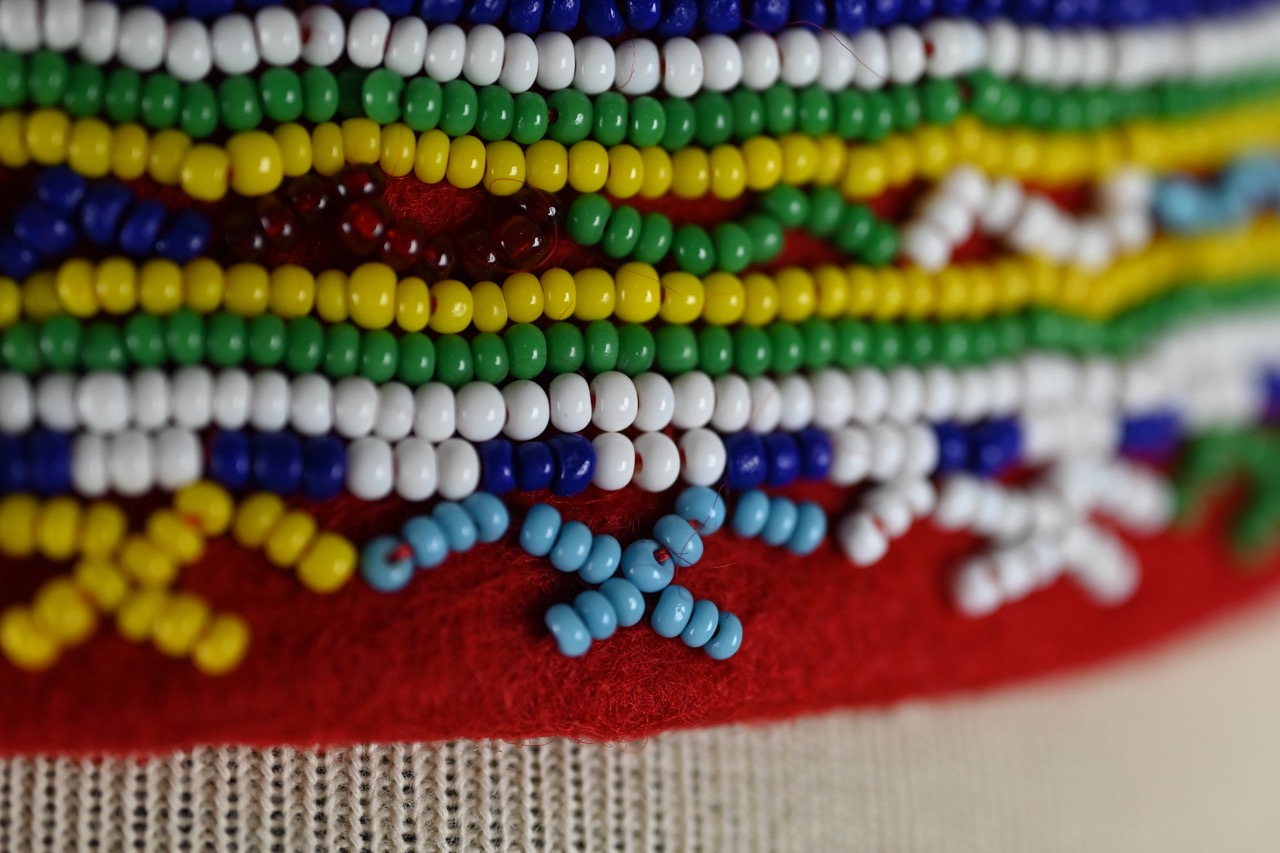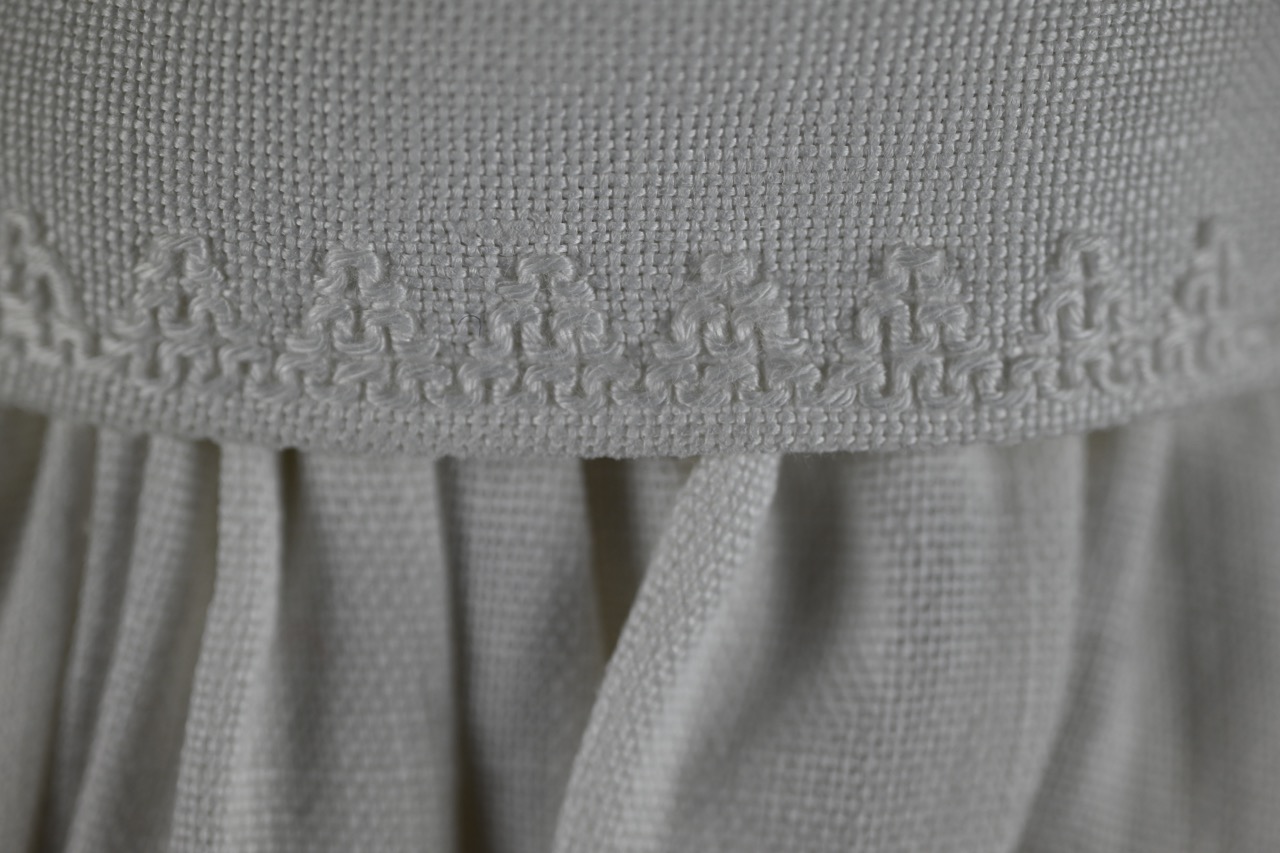Home > In Exile > “Composite” and adapted folk costumes > A Folk Costume Pieced Together From Several Countries
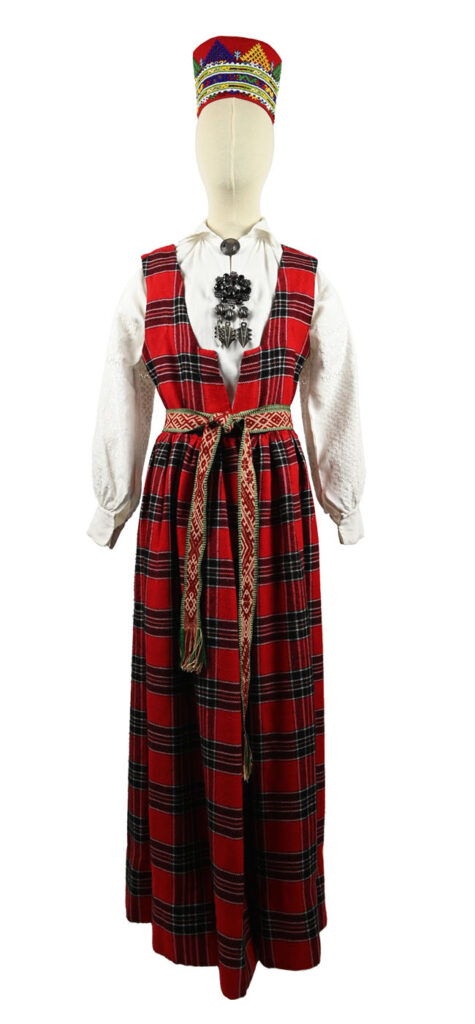
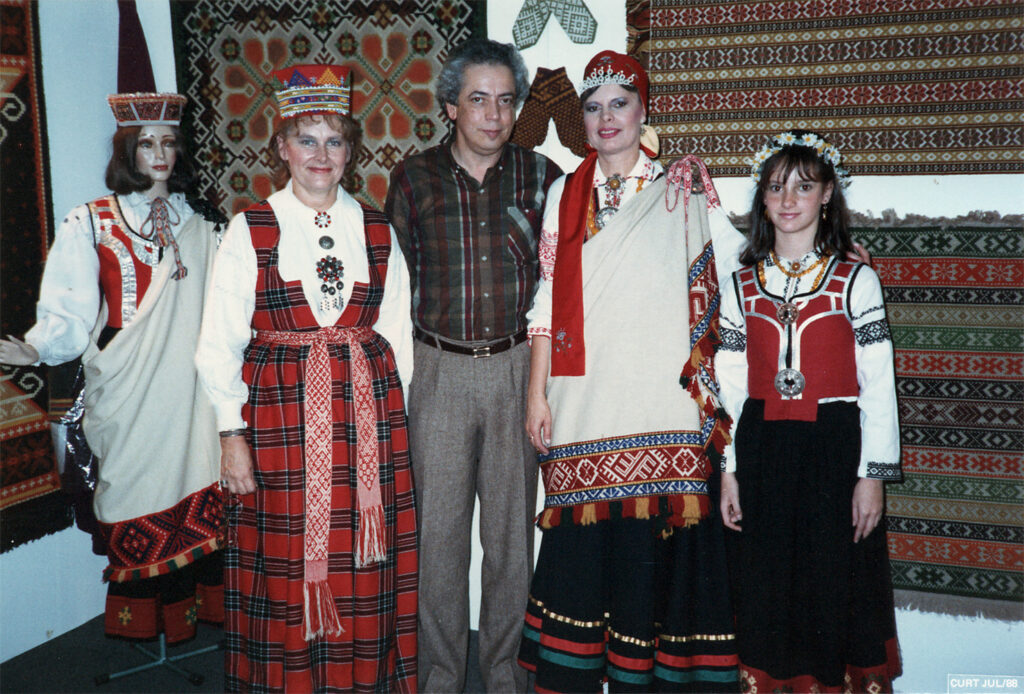
A Folk Costume Pieced Together From Several Countries
Lielvārde folk costume. Made by Ilona Gulbis (born 1939) in São Paulo, Brazil, in the 1950s. Lielvārde woven belt. Made in Latvia, brought from Latvia as a refugee.
When Ilona Gulbis was about 14 years old, she started to make a folk costume for herself. Ilona remembers that she bought the linen herself: “One with a clear and precise weave, where you could pull out threads and count the stitches exactly. And so I slowly made my blouse. It’s my own handiwork – whitework. I made it in a larger size and so I’ve worn it all these years.” Ilona made the Lielvārde skirt from wool-blend fabric bought in a shop. She bought the brooches and the woven belt in America. The belt was woven by a disabled war veteran; the jewellery was made by metalsmith Augusts Telle in Chicago. The folk costume’s headdress was made at Ilona’s request by master handicrafter Marija Ošeniece in Brazil. Ilona’s reason for choosing the Lielvārde folk costume is clear and concise: “I liked it! I was fascinated by the legend of Lāčplēsis!” When Ilona donated the folk costume to the museum, she decided to keep the Lielvārde woven belt as a memento.
Costume donated by Ilona Gulbis. Belt donated by Dzidra Ērika Daykin. From the collection of the Latvians Abroad Museum and Research Centre (LP2015.222 – costume, LP2022.549.5 – belt).
The Latvian stand at the 1988 immigrant exhibition in Ibirapuera, São Paulo, Brazil. From left: Ilona Gulbis in her Lielvārde folk costume, Vicente Bicudo. Donated by Ilona Gulbis. From the collection of the Latvians Abroad Museum and Research Centre.



